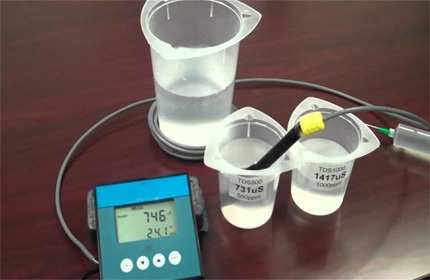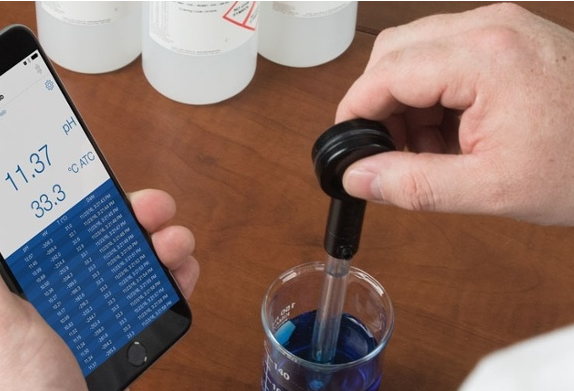If the temperature of the test solution and the positioning solution are different, the "positioning" remains unchanged, wash the pH electrode head with distilled water, and blot it dry with filter paper. Use a thermometer to measure the temperature value of the water quality sample, adjust the "temperature" regulator so that the indication is at the temperature value; insert the electrode into the measured solution, shake the test cup to make the solution uniform, and then read the pH value of the solution.
After the test is completed, remove the pH electrode of the water quality detector and rinse it with distilled water. After soaking dry with filter paper, put on the electrode protective cap. A small amount of replenisher should be placed in the cap to keep the electrode bulb moist. The calomel electrode was rinsed with distilled water, dried with filter paper, put on a rubber sleeve and plug, and placed back in place for preservation. The glass electrode is still immersed in distilled water, and then the power is turned off.

Precautions for pH value detection of water quality
1. The glass electrode must be soaked and activated in distilled water for more than 24 hours before use. In addition, the glass bubble wall is very thin (0.1mm) and easy to be touched, so be careful when using the glass electrode. If the glass bubble is contaminated, first use dilute hydrochloric acid to dissolve the inorganic salt and then use acetone to remove the oil stain (but not Use absolute ethanol). Finally soak in distilled water. If the glass electrode is not used for a long time, it can be stored directly in the electrode box without soaking.2. The saturated potassium chloride level of the calomel electrode must be higher than the mercury body, and there should be an appropriate amount of potassium chloride crystals, and in addition, avoid blockage of bubbles to prevent short circuits
3. Since the pH value of the water sample will change with the change of factors such as the absorption of carbon dioxide by the water sample, the water sample should be measured immediately after collection, and it is not suitable for long-term storage.
4. If using 221 type glass electrode and 222 type calomel electrode, it is appropriate to test the pH range of 1-9. In an acidic solution with H<1, the measured pH value will be slightly higher than the actual value. If it is an alkaline solution with pH>9, so-called "alkaline difference" will occur, and the measured pH value will be lower than the actual value.
5. If you use type 231 glass electrode and type 232 calomel electrode made of special glass, the pH value range that can be tested is 0-14, but because the electrode itself has a large internal resistance, it should be used when testing strong alkaline solutions. The temperature of the solution is controlled above 15℃, and the electrode needs to be rinsed immediately after the measurement.




